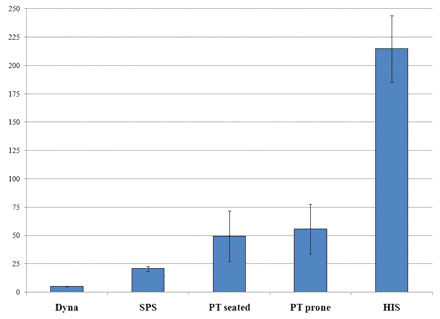Over the last several weeks we have talked about how loss of knee motion causes arthritis and ways to improve knee extension. I received several emails from people asking two questions:
- How do we know how hard to push when trying to regain motion?
- Can the devices designed to help restore motion be too aggressive?
To me, this is certainly a double edged sword. If the cause of restriction is joint or soft tissue hypomobility, you will need to push to create gains but not so hard that we cause inflammation or excessive apprehension. There is definitely a “feel” to determine how hard to push that I try to teach as a combination of the quantity and quality of motion. Putting it another way, how well is the joint moving and what is the end feel.
An interesting study was recently published in Sports Health that actually looked at these questions to an extent. Uhl and Jacobs measured the amount of torque produced during knee flexion stretching performed by physical therapsits, dynamic splinting, and static progressive splinting.
As you can see in the chart below, the typical amount of torque produced by a therapist was approximately 50 Nm of force. The static progressive splint was closest with 21 Nm of force.

Interestingly, the dynamic splint provided a fairly low amount of torque. I see this as a pro and a con. It appears that a static progressive splint may be better suited to be used by patients in a typical stretching pattern of reps and frequency, while a dynamic splint may be best used for longer durations considering the lower load applied.
I was also actually surprised to see how aggressive one of the splints was, providing nearly 4x more torque than a therapist would while stretching! I’m not 100% sure what to make of that but I tend to try to get moving quickly so that we don’t need to be so aggressive when we stretch!
Interesting info at the very least and something that I thought was worth sharing. This may help us decide what type of device we may want to use when attempting to regain motion in the future based on each person’s specific goals. The authors of the study also talk about how the specific amount of force observed using each method of stretching should impact our frequency and dose of motion activities.
[hr]




